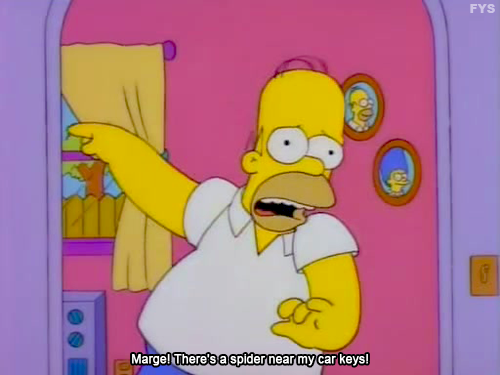Black Phosphorus Holds Promise For The Future Of Electronics

Black phosphorus holds promise for the future of electronics
Discovered more than 100 years ago, black phosphorus was soon forgotten when there was no apparent use for it. In what may prove to be one of the great comeback stories of electrical engineering, it now stands to play a crucial role in the future of electronic and optoelectronic devices.
With a research team’s recent discovery, the material could possibly replace silicon as the primary material for electronics. The team’s research, led by Fengnian Xia, Yale’s Barton L. Weller Associate Professor in Engineering and Science, is published in the journal Nature Communications April 19.
With silicon as a semiconductor, the quest for ever-smaller electronic devices could soon reach its limit. With a thickness of just a few atomic layers, however, black phosphorus could usher in a new generation of smaller devices, flexible electronics, and faster transistors, say the researchers.
That’s due to two key properties. One is that black phosphorus has a higher mobility than silicon—that is, the speed at which it can carry an electrical charge. The other is that it has a bandgap, which gives a material the ability to act as a switch; it can turn on and off in the presence of an electric field and act as a semiconductor. Graphene, another material that has generated great interest in recent years, has a very high mobility, but it has no bandgap.
Read more.
More Posts from Smparticle2 and Others

GUYS https://twitter.com/AltNatParkSer/status/824054953404669953 http://www.scientistsmarchonwashington.com/ THE NATIONAL PARK SERVICE IS IN OPEN REBELLION
The Beauty of Webb Telescope’s Mirrors
The James Webb Space Telescope’s gold-plated, beryllium mirrors are beautiful feats of engineering. From the 18 hexagonal primary mirror segments, to the perfectly circular secondary mirror, and even the slightly trapezoidal tertiary mirror and the intricate fine-steering mirror, each reflector went through a rigorous refinement process before it was ready to mount on the telescope. This flawless formation process was critical for Webb, which will use the mirrors to peer far back in time to capture the light from the first stars and galaxies.

The James Webb Space Telescope, or Webb, is our upcoming infrared space observatory, which will launch in 2019. It will spy the first luminous objects that formed in the universe and shed light on how galaxies evolve, how stars and planetary systems are born, and how life could form on other planets.
A polish and shine that would make your car jealous

All of the Webb telescope’s mirrors were polished to accuracies of approximately one millionth of an inch. The beryllium mirrors were polished at room temperature with slight imperfections, so as they change shape ever so slightly while cooling to their operating temperatures in space, they achieve their perfect shape for operations.

The Midas touch
Engineers used a process called vacuum vapor deposition to coat Webb’s mirrors with an ultra-thin layer of gold. Each mirror only required about 3 grams (about 0.11 ounces) of gold. It only took about a golf ball-sized amount of gold to paint the entire main mirror!

Before the deposition process began, engineers had to be absolutely sure the mirror surfaces were free from contaminants.

The engineers thoroughly wiped down each mirror, then checked it in low light conditions to ensure there was no residue on the surface.

Inside the vacuum deposition chamber, the tiny amount of gold is turned into a vapor and deposited to cover the entire surface of each mirror.

Primary, secondary, and tertiary mirrors, oh my!
Each of Webb’s primary mirror segments is hexagonally shaped. The entire 6.5-meter (21.3-foot) primary mirror is slightly curved (concave), so each approximately 1.3-meter (4.3-foot) piece has a slight curve to it.

Those curves repeat themselves among the segments, so there are only three different shapes — 6 of each type. In the image below, those different shapes are labeled as A, B, and C.

Webb’s perfectly circular secondary mirror captures light from the 18 primary mirror segments and relays those images to the telescope’s tertiary mirror.

The secondary mirror is convex, so the reflective surface bulges toward a light source. It looks much like a curved mirror that you see on the wall near the exit of a parking garage that lets motorists see around a corner.

Webb’s trapezoidal tertiary mirror captures light from the secondary mirror and relays it to the fine-steering mirror and science instruments. The tertiary mirror sits at the center of the telescope’s primary mirror. The tertiary mirror is the only fixed mirror in the system — all of the other mirrors align to it.

All of the mirrors working together will provide Webb with the most advanced infrared vision of any space observatory we’ve ever launched!
Who is the fairest of them all?
The beauty of Webb’s primary mirror was apparent as it rotated past a cleanroom observation window at our Goddard Space Flight Center in Greenbelt, Maryland. If you look closely in the reflection, you will see none other than James Webb Space Telescope senior project scientist and Nobel Laureate John Mather!

Learn more about the James Webb Space Telescope HERE, or follow the mission on Facebook, Twitter and Instagram.
Make sure to follow us on Tumblr for your regular dose of space: http://nasa.tumblr.com.









Mulan (1998)










The fight is not over.
follow @the-movemnt













“You wanna appease me, compliment my brain!” -Christina Yang

Self-assembling nanoparticle arrays can switch between a mirror and a window
By finely tuning the distance between nanoparticles in a single layer, researchers have made a filter that can change between a mirror and a window.
The development could help scientists create special materials whose optical properties can be changed in real time. These materials could then be used for applications from tuneable optical filters to miniature chemical sensors.
Creating a ‘tuneable’ material - one which can be accurately controlled - has been a challenge because of the tiny scales involved. In order to tune the optical properties of a single layer of nanoparticles - which are only tens of nanometres in size each - the space between them needs to be set precisely and uniformly.
To form the layer, the team of researchers from Imperial College London created conditions for gold nanoparticles to localise at the interface between two liquids that do not mix. By applying a small voltage across the interface, the team have been able to demonstrate a tuneable nanoparticle layer that can be dense or sparse, allowing for switching between a reflective mirror and a transparent surface. The research is published today in Nature Materials.
Read more.
The Six Types of Middle-Earth Names
1. Characters whose Names are Secretly Insults:

Samwise: means “Half-wise” or “Half-wit.” He is Stupid Gamgee
Faramir: Boromir’s name means “steadfast jewel”, but Faramir’s name just means “sufficient jewel.”
Sufficient.
Denethor took one look at baby Faramir and thought “eh I guess he exists or whatever” which is very in character
2. Characters who Have Way Too Many Names

Examples include Aragorn son of Arathorn son of Arador heir of Isildur Elendil’s son, descendant of Numenor, Thorongill, Eagle of the Star, Dúnadan, Strider, Wingfoot, Longshanks, Elessar, Edhelharn, Elfstone, Estel (”Hope,”) The Chieftain of the Dúnedain, King of the West, High King of Gondor and Arnor, and Envinyatar the Renewer of the House of Telcontar
Wait I’m sorry did I say “examples” plural Cuz that was all one guy 3. Characters whose parents must’ve been prophets

-Frodo means “wise by experience.” His story is about becoming wise by experience -A lady named Elwing turns into a bird (geddit)
4. Characters whose families were so lazy that they copy-pasted the same first half of a name onto multiple people

Théoden/Théodred Aragorn/Arathorn/Arador Éomer/ Éomund/Éowyn/Éorl Elladan/Elrohir/Elrond/Elros/Elwing/Elenwë/Elendil/Eldarion (the laziest family)
5.Characters whose Names are Expertly Designed so that Newbies can’t Remember Who is Who and Feel Sad

All the people mentioned in number 4 Celeborn, Celegorm, Celebrimbor, Celebrian All the rhyming dwarf names in the Hobbit Sauron and Saruman Arwen and Éowyn
6. Name so nice, you say it twice

Legoas Greenleaf: Legolas’s first name means “Greenleaf” in elvish. Legolas is Greenleaf Greenleaf (thranduil really likes green leaves ok) King Théoden’s name means King in Rohirric. Tolkien decided to name his king “King.” All hail King King this is what the fanbase means when we say tolkien was a creative genius with language
-
 helylladyninar-blog liked this · 7 years ago
helylladyninar-blog liked this · 7 years ago -
 ssakee6 reblogged this · 7 years ago
ssakee6 reblogged this · 7 years ago -
 urbanoceanix reblogged this · 8 years ago
urbanoceanix reblogged this · 8 years ago -
 metamorphosismaterials reblogged this · 8 years ago
metamorphosismaterials reblogged this · 8 years ago -
 parashont reblogged this · 8 years ago
parashont reblogged this · 8 years ago -
 moxious liked this · 8 years ago
moxious liked this · 8 years ago -
 dissyparadiddle liked this · 8 years ago
dissyparadiddle liked this · 8 years ago -
 sciencenerd4-blog liked this · 8 years ago
sciencenerd4-blog liked this · 8 years ago -
 smparticle2 reblogged this · 8 years ago
smparticle2 reblogged this · 8 years ago -
 nordevx-blog liked this · 8 years ago
nordevx-blog liked this · 8 years ago -
 kalifissure liked this · 8 years ago
kalifissure liked this · 8 years ago -
 thenanoscientist-blog liked this · 8 years ago
thenanoscientist-blog liked this · 8 years ago -
 godless-dirt-worshipper reblogged this · 8 years ago
godless-dirt-worshipper reblogged this · 8 years ago -
 ginseiryu liked this · 8 years ago
ginseiryu liked this · 8 years ago -
 discoverysciencecentre reblogged this · 8 years ago
discoverysciencecentre reblogged this · 8 years ago -
 jwchapman13 liked this · 8 years ago
jwchapman13 liked this · 8 years ago -
 iceman-writing liked this · 8 years ago
iceman-writing liked this · 8 years ago -
 gregon9 liked this · 8 years ago
gregon9 liked this · 8 years ago -
 materialsscienceandengineering reblogged this · 8 years ago
materialsscienceandengineering reblogged this · 8 years ago